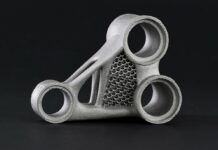3D printers are ordinarily regarded as an environmentally friendlier version of manufacturing, as traditional manufacturing they generate more environmentally harmful waste. Scientists aren’t satisfied with the harmful effects of traditional manufacturingand as such, they keep on finding environmentally friendly ways of manufacturing, cue, 3D printers. This dedication is particularly impressive as we live in a world that is dominated by rigid industrialists who make their big bucks pumping harmful substances into the environment.
3D Printing and Bio Products: Wood-based ink
3D Printing has recently proven to be an outlet for which bioproducts can be used. The remarkable discovery of a wood-based ink has pushed a greener planet even further. After hitting a previous limitation with wood, scientists have dug into their heels and found a way to mimic the genetic makeup of wood digitally and optimized it to work with 3D printers.
This has allowed 3D printer create a printing which bears many similarities to the structure of the wood and its properties. . This has been tried with 3D printers such as the RegenHu, BIO X and INKREDIBLE. This progress achieved by this 3D printing, has the potential to cut across fields such as education (which includes the production of writing materials), the clothing industry and a huge prospect for space travels. Scientists theorize that this type of printing would allow needed materials be made on space exploration missions, including the growing of food. This is all theoretical at the moment but it is hoped that with more research, 3D printing technology can be developed to achieve this potential.
The most exciting aspect about using wood-based ink for 3D Printing is that it is environmentally friendly as opposed to the usual manufacturing and the harmful gasses that accompany it right from production to the point of shipping and delivery. This “3D printing material” offers a localized means of production and limits the spread of harmful gasses.
3D Printing and Bio Products: Termite Faeces.
This involves 3D printing without the usual polymer’s inclusion in favour of using dust-like wood particles and termite faecal matter. This faecal matter is environmentally friendly and it furthers the narrative that 3D printing is the answer to manufacturing with greener earth in mind. This faecal matter is gotten by the scientists creating a farm of termites and feeding them for a specific period of time and collecting their faecal matter. This faecal matter is then used with other 3D printing materials.
This method is still under research in Germany as the result, while intriguing doesn’t have practicable uses at the moment. This is a fact that is also admitted by German scientists. In no time, with further research, 3D Printing is the key to bio-sustainable manufacturing future.
Biorefinery and 3D Printing
You can see from the above that researchers are keen on healthier earth and it is this drive that has made scientists do more research on finding waste to make use of industrial waste. 3D printing provided the much sought-after answer in the form of Lignin, a bio-refinery waste product.
Lignin is a by-product of refining biomass. This material helps give plant a rigid form and makes biomass tough to process. The process of using Lignin is quite technical as Lignin itself is susceptible to heat and can burn quite easily but scientists’ creativity prevailed as the hard Lignin is melted to a temperature within which it can bear in order to soften it.
Afterwards, it is melt-bonded Lignin with different materials. One material that has the best bonding results with Lignin is a normal plastic, a kind of nylon which melts at low heat and carbon fibre. Combining these materials results in a biochemical blend with incredible mechanical characteristics that suit the 3D printing process like a glove.
This chemical blend is as strong as nylon alone and less thicker than the usual 3D printing polymers like acrylonitrile-butadiene-styrene. Scientists probed the nature of this chemical blend in a bid to understand how Lignin, nylon (low melting kind) and carbon fibre could combine like that. The answer lies in the fact that per the molecular structure of this chemical blend, it bore a certain kind of resemblance to plastic, which would make them 3D Print with it. This chemical blend, in fact heats faster, prints faster and delivers a more powerful product.
Conclusion
Global warming is real and the efforts of scientists to eliminate waste and use bio-products for 3D printing purposes in other to achieve a greener environment is commendable. Sooner than later environmental demands could cause the shift from the usual means of manufacturing and a switch to 3D printer as it offers an extended life to the environment. The greener the earth, the safer it is for us to live in.
Remember, you can post job opportunities in the AM Industry on 3D ADEPT Media free of charge or look for a job via our job board. Make sure to follow us on our social networks and subscribe to our weekly newsletter : Facebook, Twitter, LinkedIn & Instagram ! If you want to be featured in the next issue of our digital magazine or if you hear a story that needs to be heard, make sure to send it to contact@3dadept.com
Justin is an essay writer and blogger from Leicester, England, UK. When not teaching his little students and rooting for Leicester FC, he loves to share his thoughts and opinions about education, writing for uk.bestessays.com.





